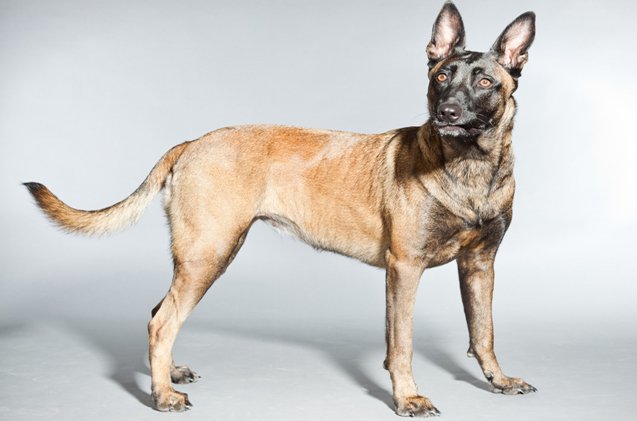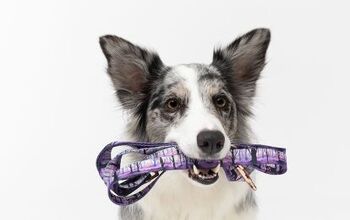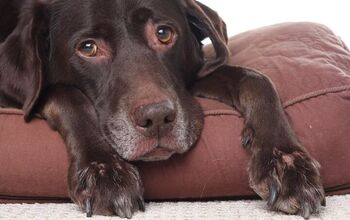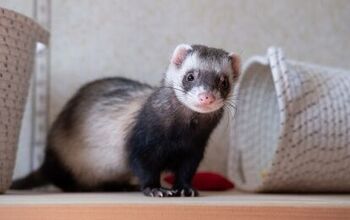Belgian Malinois


About Belgian Malinois
If you don’t stop and look twice, you might confuse the Belgian Malinois with a really tough-looking German Shepherd. That would be a big mistake and an unfair burden to put on the Belgian Malinois. Although they both hail from the same general region of Europe, there are some key differences between the breeds that you’ll want to be aware of. Considered good as a guard or police dog, the Belgian Malinois actually looks like the police of the dog world, strong and square and certainly ready for action. He’s a pupper authority figure. Ready to keep all other dogges in line.
While the Belgian Malinois can be incredibly loyal and even obedient, they’re definitely not a dog for someone who isn’t able to demonstrate authority over a dog. If you’re a particularly passive owner who prefers a dog who develops its own personality naturally, the Belgian Malinois is probably not for you. They can be territorial and while not always aggressive, they’ll need proper training and socialization from a young age to bring out their innate friendliness and general cooperation. This is not an an ideal pet for a first time dog owner. It takes a certain type of owner to keep up.
Are you that type of owner? There’s only one way to find out. Keep your eyes glued to this page and scroll away. All will be revealed. By the end of this article, you’ll either be running out to bring home a Belgian Malinois or frantically searching for a different dog. So what are you waiting for? Read on…
If you don’t stop and look twice, you might confuse the Belgian Malinois with a really tough-looking German Shepherd.
One of four Belgian sheep dogs – that is, dogs commonly used to herd sheep – the Belgian Malinois is actually far more popular in its home country of Belgium than it is in the U.S., even despite the relative popularity of the German Shepherd. Hard to believe, but true. While there are three other breeds of Belgian sheep dogs, many have considered them all the same breed with minimal differences, such as the color of their coat.
Even so, the Belgian Malinois gained American Kennel Club recognition as a breed in its own right in 1959. The breed is just that well respected. In the United Kingdom, however, the more European way of acknowledging this dog as part of a larger breed is still adopted. This can make for some confusion between the two continents, but when you see a Belgian Malinois, there can be little mistaking that you’re looking at a very serious dog indeed.
Closely related to its other four sheep dog breeds, the Belgian Malinois has a similar backstory to that of the German Shepherd. Being used to round up sheep and to accompany farmers in their daily work, the Belgian Malinois obviously carries its pedigree from Belgium, with a very strong Belgian identity. There can be no mistaking a Malinois for a German Shepherd should you actually visit one of the two countries.
The breed was clearly developed with a number of strong qualities in mind, such as strength, agility, and a number of other physical characteristics. There is little that will actually frighten a Belgian Malinois out on the farm, although they can become territorial and a little bit wary of strangers, perhaps a relic of being on isolated Belgian farms through much of its pedigree’s history.
Capable of eating plenty of meat, the Belgian Malinois is a good-sized dog that will need a good-sized diet, at least relative to other dogs. Even so, it’s important to keep in mind that the Belgian Malinois is actually relatively small in weight compared to humans and it has a lighter frame that can be a little deceptive, so be sure not to overfeed your dog.
As always, if you are in any way concerned about establishing or significantly altering your dog’s diet, then it’s worth consulting with a veterinarian first. While dog food manufacturers and pet blogs may provide useful feeding guidelines, they are still just guidelines and will not apply to every dog. All dogs are different after all, each with their own needs. The only person qualified to determine the specific dietary needs of your personal pooch is a vet. So always rely on their expertise before making any changes to what goes into your pup’s bowl.
The Belgian Malinois is actually far more popular in its home country of Belgium than it is in the U.S.
Training is important to this breed. Proper training, a consistent set of boundaries and discipline, and a master with a good presence of mind will all be important. This dog is not like the Golden Retriever, where training and socialization can be quite easy. Instead, the Belgian Malinois can be territorial and fearful of strangers if not raised properly, and will become uncooperative if not trained for obedience.
When trained properly, there are few dogs more loyal and obedient than the Belgian Malinois. As long as you can demonstrate authority over this dog, you should be fine. If this worries you, another breed might be more appropriate. It takes a special type of owner to train this breed. Even experienced dog owners may want to consider bringing in a professional trainer and enrolling their Belgian Malinois in obedience school. While this is a wonderful dog when properly trained, it takes extra special care to get there. So don’t take on this responsibility unless you are prepared for the necessary (and significant) commitment.
Weighing around 55-65 pounds, this is a larger dog with plenty of power, so be sure to treat it with the respect such a size requires.
As mentioned, the Belgian Malinois can be a bit territorial and even scared of strangers, so it’s important to demonstrate to the Belgian Malinois that other people are not always a threat. The Belgian Malinois’ experience in Belgian farms clearly affects its overall disposition, as it is a good companion dog with a strong sense of territory. Their behavior is very obedient around the right master, but they can become a bit reckless without the right training.
Like almost all dogs of its size, hip dysplasia can be an issue, but there are otherwise no major health concerns for the Belgian Malinois, making it a particularly “tough” breed. As always, it is important to maintain regularly scheduled checkups with a vet to ensure that any potential health issues are identified and treated as early as possible.
A life span of 12-14 years should be expected of the Belgian Malinois, which is a relatively long and healthy life.
This dog is better suited for the outdoors and the active life it brings. Living on a farm will be natural to the Belgian Malinois, because there’s plenty of opportunity for exercise and play. The dog can live in apartments, but this will require a good habit of outdoor exercise in order to get the Belgian Malinois its fair share. This dog likes being free from the leash when you know it’s safe for it to be so, which is best done on your own private property.
When trained properly, there are few dogs more loyal and obedient than the Belgian Malinois.
Says the American Kennel Club: “Intelligent and trainable, the Belgian Malinois possesses a strong desire to work and is happiest with regular activity and a job to do.”
The coat of the Belgian Malinois should be relatively short and ready to handle a variety of weather conditions, giving it a good versatility, which is nice if you live in a colder-weather country. Some grooming may be required to ensure the coat does not get too long in areas, and regular brushing is a good idea to keep the coat and skin healthy. This is not a hard dog to keep groomed.
It’s important to ensure that Belgian Malinois puppies are properly trained and socialized from a very young age so they learn boundaries and are able to socialize well with people and other animals. While these puppies are undeniably adorable, it’s important not to waste a moment of those early and impressionable puppy days. Starting a training and socialization program early is vital for the longterm health and obedience of any Belgian Malinois.
Photo credit: Ysbrand Cosijn/Shutterstock

Amy Tokic, Editor of PetGuide.com, is a passionate animal lover and proud pet parent of Oscar, a Shih Tzu/Chihuahua cross, and Zed, a Japanese Chin. Her love of animals began in kindergarten, when she brought her stuffed dog Snoopy into class with her every day. Now, she writes about her adventures in pet ownership and tirelessly researches products, news and health related issues she can share with other animal enthusiasts. In her free time, Amy loves perusing used book and record stores, obsessing over the latest pet products available and chasing squirrels with wild abandon (a habit attributed to spending too much time with her pooches).
More by Amy Tokic

























